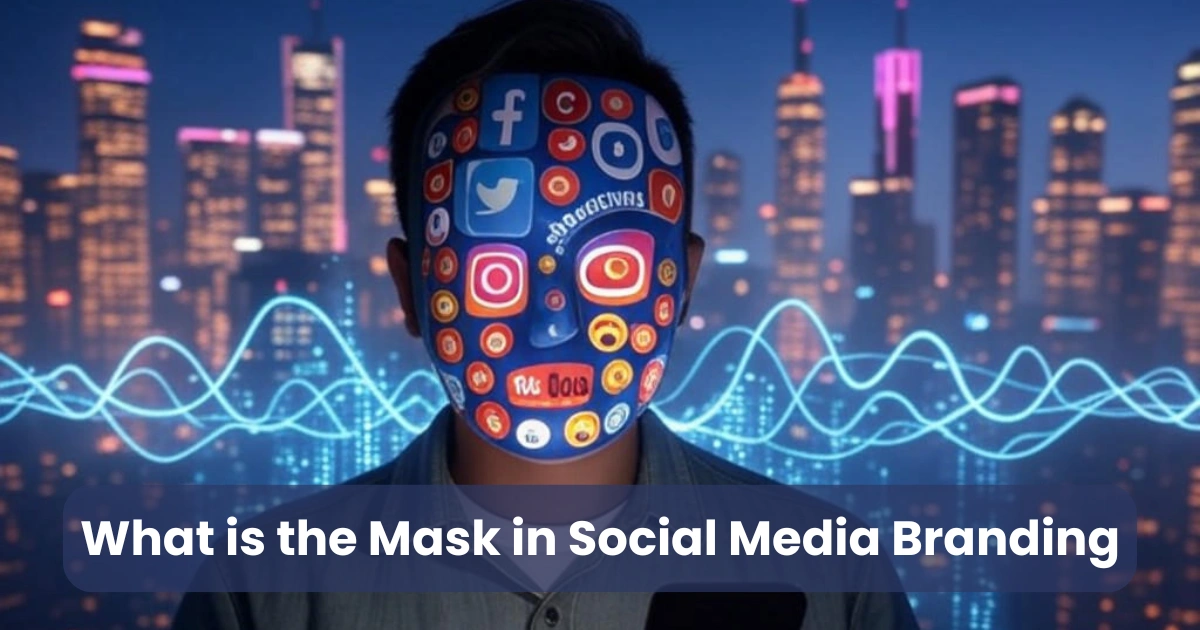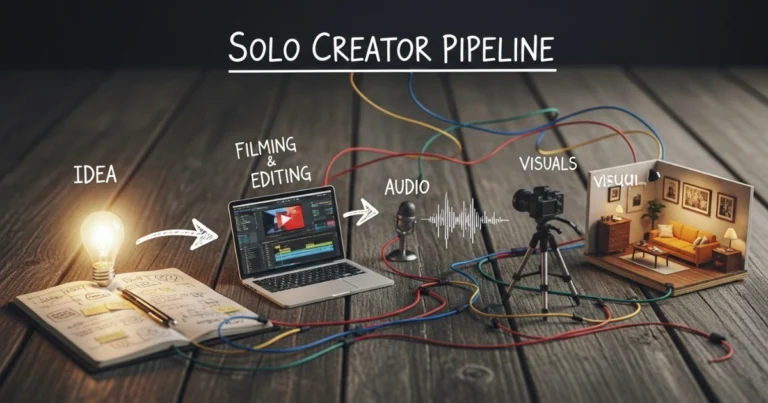What is the Mask in Social Media Branding?

Contents
- 1 What is the Mask in Social Media Branding?
- 2 Why the Mask Matters in Social Media Branding
- 3 Key Elements of the Mask in Social Media Branding
- 4 How to Craft an Effective Mask for Social Media Branding
- 5 Common Mistakes to Avoid When Crafting Your Mask
- 6 Case Studies: Brands Mastering the Mask in Social Media Branding
- 7 Tools to Enhance Your Mask in Social Media Branding
- 8 The Future of the Mask in Social Media Branding
In the dynamic world of digital marketing, the mask in social media branding serves as a powerful tool for crafting a compelling online identity. This concept refers to the curated persona or image a brand projects on platforms like Instagram, X, LinkedIn, and TikTok to connect with its audience. Far from being deceptive, the mask is a strategic blend of authenticity, creativity, and consistency that shapes how audiences perceive a brand. By understanding and leveraging this concept, businesses can build trust, foster engagement, and stand out in a crowded digital landscape. This article explores the essence of the mask in social media , its importance, and practical strategies to maximize its impact, ensuring your brand resonates with your target audience.
What is the Mask in Social Media Branding?
The mask in social media branding is the deliberate and curated image a brand presents to its audience online. It’s not about hiding the truth or being inauthentic; instead, it’s about strategically showcasing the aspects of your brand that align with your values, mission, and audience expectations. Think of it as a theatrical mask: it enhances certain traits to create a memorable impression while staying rooted in the brand’s core identity.
For instance, a fitness brand might use vibrant visuals, motivational captions, and stories of transformation to project energy and inspiration. This curated persona—the mask—amplifies the brand’s appeal to its audience, even though it doesn’t reveal every detail of the business. By carefully crafting this mask, brands can control their narrative, highlight their unique selling points, and foster emotional connections with followers.
Transitioning to its significance, the mask in social media branding allows businesses to maintain consistency across platforms. Whether it’s a playful tone on TikTok or a professional voice on LinkedIn, the mask ensures the brand feels cohesive yet tailored to each platform’s audience.
Why the Mask Matters in Social Media Branding
The mask in social media branding is crucial for several reasons. First, it helps brands differentiate themselves in a saturated digital space. With millions of accounts vying for attention, a well-crafted mask ensures your brand stands out. For example, a coffee shop might adopt a cozy, community-focused mask to attract local customers, while a tech company might emphasize innovation and sleek design to appeal to a global audience.

Second, the mask fosters trust and relatability. Audiences are more likely to engage with brands that feel human and approachable. By curating a consistent persona—whether it’s witty, empathetic, or authoritative—brands can build stronger relationships with their followers. Moreover, the mask in social media branding enables businesses to adapt their messaging to suit different platforms while maintaining a unified identity.
Finally, the mask enhances brand recall. A distinctive visual style, tone, or storytelling approach makes your brand memorable. For example, Wendy’s uses a humorous, sassy mask on X to engage users, making its social media presence instantly recognizable. By leveraging the mask effectively, brands can create lasting impressions that drive loyalty and engagement.
Key Elements of the Mask in Social Media Branding
To create an effective mask in social media branding, businesses must focus on several core elements. These components work together to shape a cohesive and impactful online presence.

1. Visual Identity
Your visual identity is the cornerstone of the mask in social media branding. This includes your logo, color palette, typography, and imagery style. For example, a luxury brand might use elegant fonts and a monochromatic color scheme to convey sophistication, while a youth-oriented brand might opt for bold colors and dynamic visuals. Consistency in visuals across platforms reinforces your brand’s identity and makes it easily recognizable.
2. Tone of Voice
The tone of voice defines how your brand communicates. Is it friendly, professional, or quirky? The tone should reflect your brand’s personality and resonate with your audience. For instance, a nonprofit might use an empathetic and inspiring tone, while a gaming brand might adopt a playful, energetic voice. The mask in social media relies on a consistent tone to build familiarity and trust.
3. Content Strategy
Your content strategy shapes the stories you tell and the value you provide. This includes the types of posts you share—educational, entertaining, or promotional—and the formats you use, such as videos, carousels, or stories. A well-planned content strategy ensures the mask in social media branding aligns with your audience’s interests and needs.
4. Audience Engagement
Engagement is a two-way street. The mask in social media branding isn’t just about what you project; it’s also about how you interact with your audience. Responding to comments, hosting Q&A sessions, and sharing user-generated content humanize your brand and strengthen connections. For example, a beauty brand might repost customer reviews or tutorials to build community and trust.
5. Consistency Across Platforms
While the mask may vary slightly across platforms to suit their unique audiences, consistency is key. Your core values, visual style, and tone should remain unified. For instance, a fashion brand might share polished photos on Instagram and behind-the-scenes videos on TikTok, but both should reflect the same brand essence. The mask in social media branding thrives on this balance of adaptability and consistency.
How to Craft an Effective Mask for Social Media Branding
Creating a mask that resonates with your audience requires careful planning and execution. Here are actionable steps to develop a compelling mask in social media branding.

Step 1: Define Your Brand’s Core Values
Start by identifying your brand’s mission, vision, and values. What do you stand for, and what sets you apart? For example, a sustainable clothing brand might emphasize eco-friendliness and transparency. These values form the foundation of your mask, ensuring it’s authentic and aligned with your business.
Step 2: Understand Your Audience
To craft a mask that connects, you must know your target audience inside out. Research their demographics, preferences, and pain points. Tools like Instagram Insights or X Analytics can provide valuable data on your audience’s behavior. For instance, if your audience is Gen Z, a vibrant and humorous mask might work best, while older audiences may prefer a more professional tone.
Step 3: Develop a Visual and Verbal Identity
Create a style guide that outlines your visual and verbal identity. Choose a color palette, fonts, and imagery that reflect your brand’s personality. Similarly, define your tone of voice and key messaging. For example, a tech startup might use futuristic imagery and a confident tone to convey innovation. This guide ensures consistency in your mask across all social media platforms.
Step 4: Tailor Content to Each Platform
While your mask should be consistent, it must adapt to each platform’s unique vibe. For instance, LinkedIn demands a professional tone, while TikTok thrives on creativity and trends. A restaurant might share mouthwatering photos on Instagram, quick recipe videos on TikTok, and customer testimonials on LinkedIn. The mask in social media branding shines when it’s versatile yet cohesive.
Step 5: Monitor and Refine Your Mask
The digital landscape evolves rapidly, so your mask must stay relevant. Regularly analyze your performance metrics—engagement rates, follower growth, and click-throughs—to gauge your mask’s effectiveness. Tools like Hootsuite or Sprout Social can help track these metrics. If a certain tone or content type isn’t resonating, tweak it. The mask in social media branding is a living entity that evolves with your audience and trends.
Common Mistakes to Avoid When Crafting Your Mask
While the mask in social media branding is a powerful tool, missteps can undermine its effectiveness. Here are common pitfalls to avoid:

1. Inauthenticity
A mask that feels fake or disconnected from your brand’s values will alienate your audience. For example, adopting a trendy persona that doesn’t align with your business can erode trust. Always root your mask in authenticity.
2. Inconsistency
Inconsistent visuals or messaging can confuse your audience. For instance, using a formal tone on LinkedIn and a casual one on Instagram without a unifying thread can dilute your brand’s identity. Ensure your mask in social media branding remains cohesive across platforms.
3. Ignoring Audience Feedback
Your audience’s reactions provide valuable insights. Ignoring comments or failing to engage can make your brand seem distant. Actively listen to feedback and adjust your mask accordingly.
4. Overloading with Promotion
A mask that’s overly sales-focused can turn off followers. Balance promotional content with value-driven posts, such as tips, stories, or entertainment, to keep your audience engaged.
5. Neglecting Trends
Social media trends evolve quickly. Failing to adapt your mask to incorporate trending formats, like Reels or X Spaces, can make your brand feel outdated. Stay agile and experiment with new features to keep your mask fresh.
Case Studies: Brands Mastering the Mask in Social Media Branding
To illustrate the power of the mask in social media branding, let’s explore two real-world examples.
Case Study 1: Nike
Nike’s mask is built on inspiration, empowerment, and athletic excellence. Its vibrant visuals, motivational captions, and athlete-driven stories create a cohesive persona across platforms. On Instagram, Nike shares stunning visuals of athletes in action, while on X, it engages with trending sports topics. This mask resonates with its audience, driving loyalty and engagement.
Case Study 2: Glossier
Glossier, a beauty brand, uses a mask of relatability and inclusivity. Its soft, minimalist visuals and conversational tone make it feel like a friend rather than a corporation. On Instagram, Glossier shares user-generated content and tutorials, while on TikTok, it leverages trending challenges. This approachable mask has helped Glossier build a cult-like following.
These examples highlight how the mask in social media branding, when executed well, can elevate a brand’s presence and foster deep audience connections.
Tools to Enhance Your Mask in Social Media Branding
To streamline the process of crafting and managing your mask, consider these tools:
- Canva: Create stunning visuals that align with your brand’s mask.
- Hootsuite or Buffer: Schedule posts and track performance to maintain consistency.
- BuzzSumo: Analyze trending topics to keep your mask relevant.
- Adobe Express: Design professional-grade graphics for your social media content.
- Google Analytics: Track website traffic driven by your social media mask.
By leveraging these tools, you can ensure your mask in social media is polished, consistent, and effective.
The Future of the Mask in Social Media Branding
As social media evolves, so will the mask in social media branding. Emerging trends like AI-driven content creation, immersive storytelling (e.g., AR filters), and the rise of niche platforms will shape how brands craft their masks. For instance, AI tools can analyze audience data to refine your mask, while platforms like X may introduce new features that demand creative adaptations.

Additionally, audiences are increasingly valuing authenticity and transparency. The mask in social media branding will need to balance curation with vulnerability, showing the human side of brands. For example, sharing behind-the-scenes content or addressing challenges openly can strengthen your mask’s relatability.
To stay ahead, brands must remain agile, experiment with new formats, and continuously refine their mask based on audience feedback and platform changes.
Conclusion
The mask in social media branding is more than a facade—it’s a strategic tool that blends authenticity, creativity, and consistency to craft a compelling online presence. By defining your brand’s values, understanding your audience, and leveraging visuals, tone, and content, you can create a mask that resonates and drives engagement. Avoid common pitfalls like inauthenticity or inconsistency, and use tools to streamline your efforts. As social media evolves, so must your mask, adapting to trends while staying true to your core identity. Start crafting your mask in social media branding today, and watch your brand’s online presence soar.






